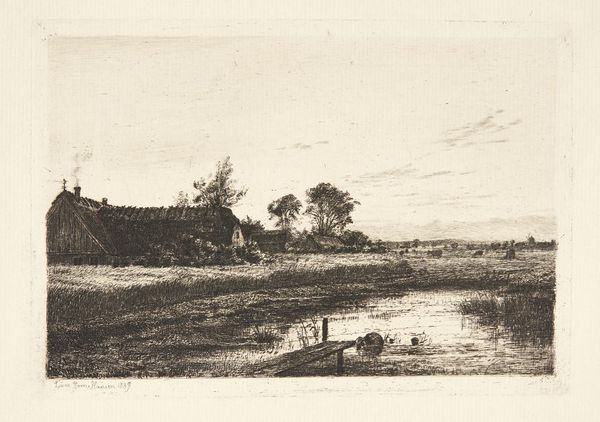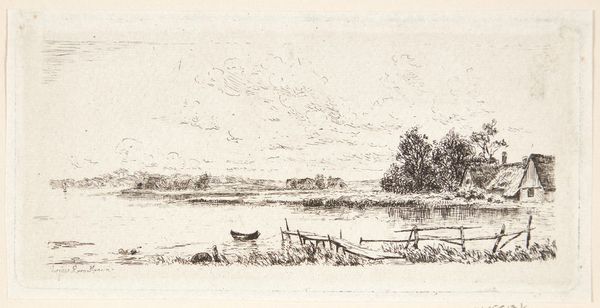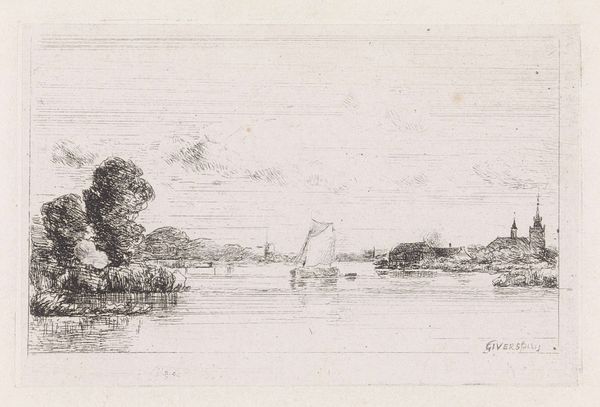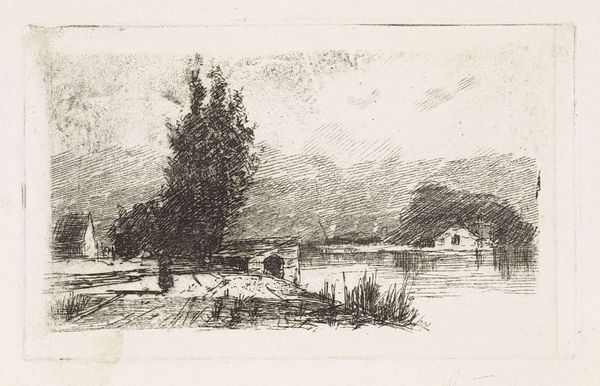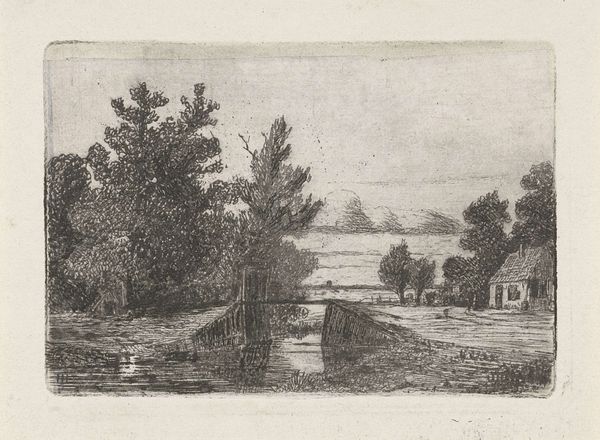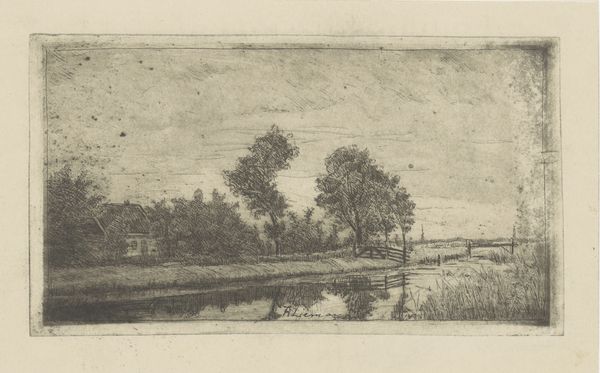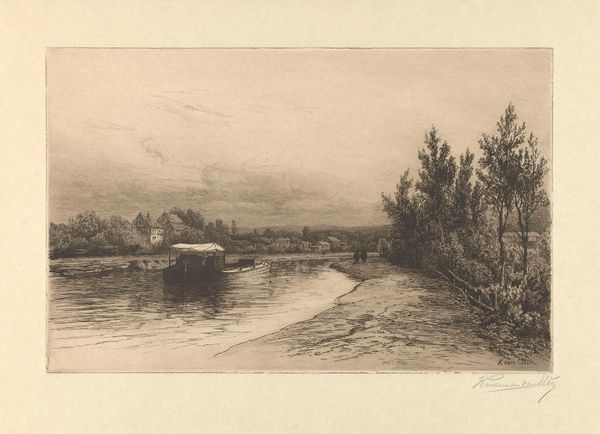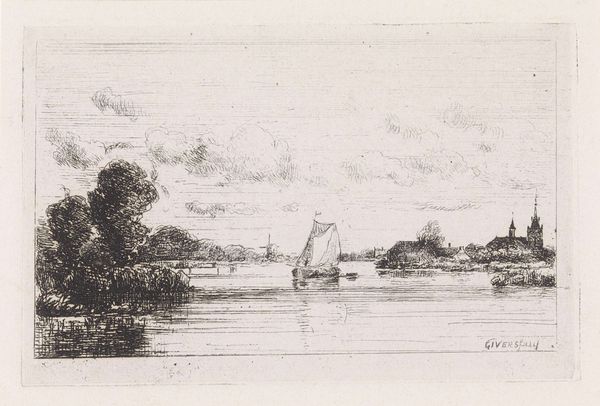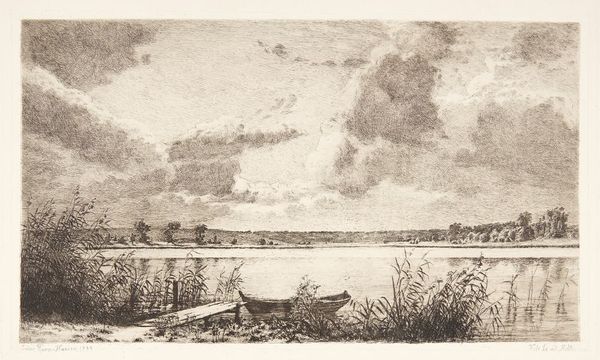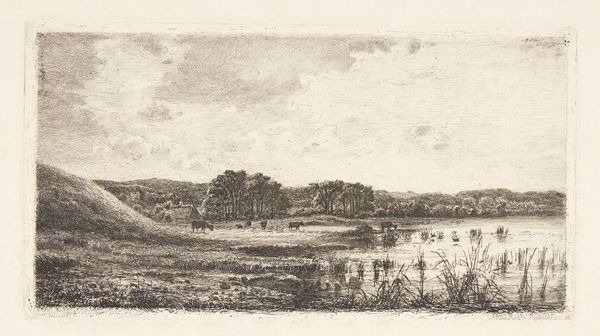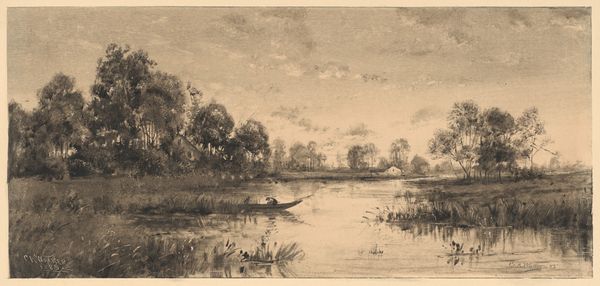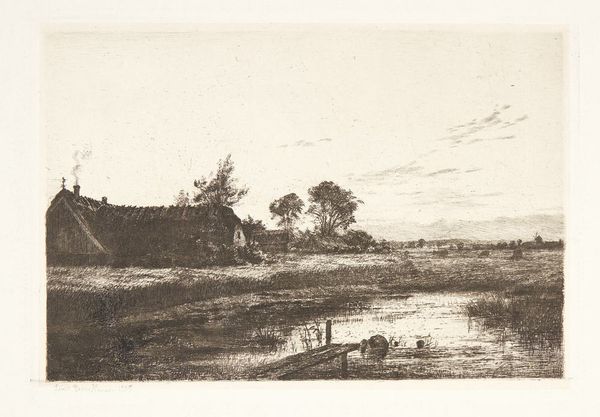
etching
#
dutch-golden-age
#
etching
#
landscape
#
realism
Dimensions: height 99 mm, width 158 mm
Copyright: Rijks Museum: Open Domain
Editor: So, this is "Polderlandschap" by Elias Stark, an etching from 1886. It's a landscape, obviously, and the mood feels so still, almost melancholic. All that water reflecting the pale sky... it's quite striking. What do you see in this piece, especially thinking about it as an image carrying cultural weight? Curator: What resonates with me is the quietude, which is characteristic of the Dutch Golden Age landscapes. Stark, working later, consciously or unconsciously taps into that tradition. See how the church spire punctuates the low horizon? A universal symbol of community and continuity. But look closer – do you see any figures? Editor: I think there are some cows grazing near the church. But the human element feels minimized, if not absent. Curator: Precisely! The absence is as telling as any presence. It’s as if the landscape *itself* is the protagonist, bearing witness. The polder, reclaimed land, is itself a symbol of Dutch perseverance and the constant struggle against the water. Do you feel that tension here, between the idyllic scene and the memory of that ongoing labour? Editor: I hadn't really thought of it that way, but yes. The etching feels so delicate, but the image suggests a hard-won landscape. Is that maybe why it feels a bit sad? Curator: It speaks, I think, to a sense of place deeply intertwined with historical and cultural memory. We feel the echoes of those who came before, shaping the land we see represented in symbolic visual form. Stark presents more than a landscape – it offers cultural identity etched in light and shadow. Editor: It's amazing how much information and emotion can be conveyed through such a seemingly simple image. I definitely have a deeper appreciation for landscape art now.
Comments
No comments
Be the first to comment and join the conversation on the ultimate creative platform.

